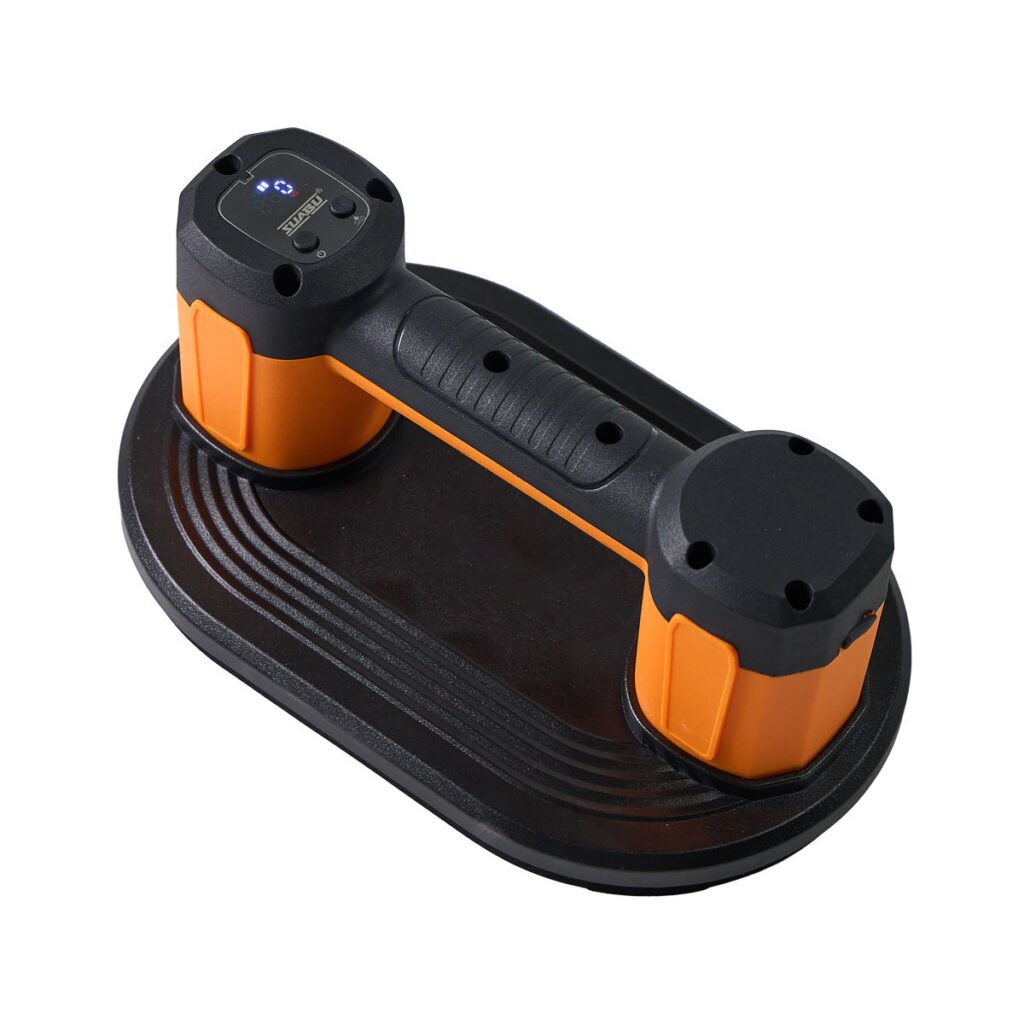A suction cup lifter is a tool designed to grip, lift, and move objects using vacuum pressure created by suction cups. Here’s a detailed breakdown:

How It Works
- Vacuum Principle: When a suction cup is pressed against a smooth surface, air is expelled, creating a low-pressure seal. Atmospheric pressure then holds the cup firmly in place, allowing the object to be lifted.
- Release Mechanism: A valve or lever breaks the seal by allowing air back into the cup, safely detaching it.
Key Components
- Suction Cups: Made of flexible, durable materials like rubber or silicone to ensure a tight seal.
- Handle/Frame: Provides grip and control, often with a pump (manual lever or electric) to enhance vacuum creation.
- Safety Features: Pressure relief valves, load indicators, and redundant seals to prevent accidental drops.
Types
- Manual: Operated by hand, using a lever to generate suction (e.g., for small panels or DIY projects).
- Powered: Uses electric or pneumatic pumps for heavy-duty tasks (e.g., industrial glass or automotive parts).
- Multi-Cup Systems: Multiple cups distribute weight for larger/heavier items (e.g., construction materials).
Applications
- Construction: Handling glass panes, tiles, or metal sheets.
- Manufacturing: Moving appliances, machinery, or fragile components.
- Warehousing/Retail: Lifting boxes, countertops, or displays.
- Household: Repositioning furniture or mirrors without damage.
Safety Considerations
- Surface Compatibility: Requires smooth, non-porous surfaces for effective sealing.
- Weight Limits: Adhere to the lifter’s rated capacity to avoid failure.
- Maintenance: Regularly inspect cups for wear and clean surfaces to maintain suction.
Benefits
- Ergonomic: Reduces physical strain and improves workplace safety.
- Efficiency: Enables quick handling of bulky or delicate items without damage.
Suction cup lifters are versatile tools bridging manual labor and mechanized lifting, ideal for industries and tasks requiring precision and safety.



